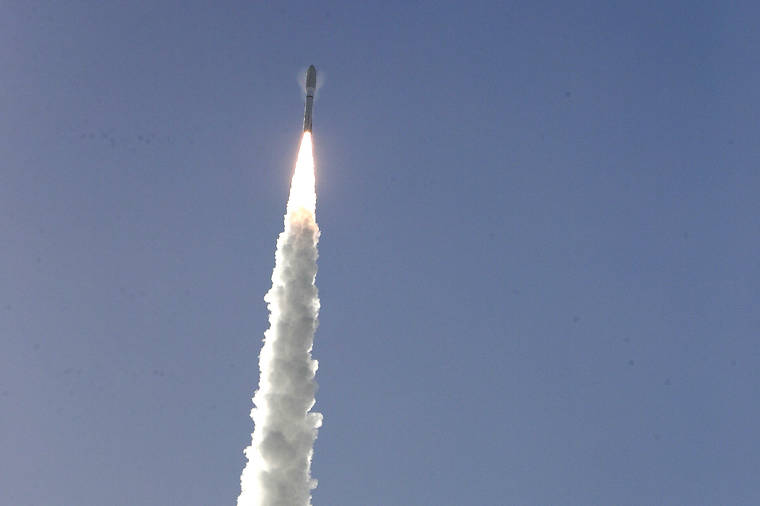Hawaii scientists part of team that launched rover to Mars

ASSOCIATED PRESS
A United Launch Alliance Atlas V rocket lifted off from pad 41 at the Cape Canaveral Air Force Station, today, in Cape Canaveral, Fla. The mission sent a Mars rover to the Red Planet to search for signs of life, explore the planet’s geology and much more.
A team of three University of Hawaii scientists were selected in 2014 to develop NASA instruments for the rover called Perseverance, which launched today from the Kennedy Space Center Opens in a new tab in Florida on a mission to uncover any signs of ancient Martian life.
The rover’s expedition will last one Mars year, or about 687 Earth days — with the return date set on Feb. 18, 2021.
The new rover was built to carry sophisticated hardware and instruments to perform geological assessments on Mars. Among the instruments is an advanced camera system with a panoramic and 3-D imaging and zoom ability. Perseverance will also carry a “proof-of-concept technology” called MOXIE that produces oxygen from Mars’ carbon dioxide atmosphere, and an instrument suite called MEDA, which provides information about the current weather, climate and the nature of dust in the atmosphere.
The three UH scientists played a vital role in who operate rover instruments. Sarah Fagents, who is a researcher at the Hawaii Institute of Geophysics and Planetology (HIGP), is the Mastcam-Z team’s volcanologist. And HIGP researchers Shiv Sharma and Anupam Misra, who are experts in Raman spectroscopy and fluorescence, will look for indicators that life had possibly existed or currently exists on Mars.
“The entire Mars 2020 team has been training for Mars surface operations by means of mission simulations on Earth so that we will be able to hit the ground running when the rover lands,” Fagents said in a news release.



